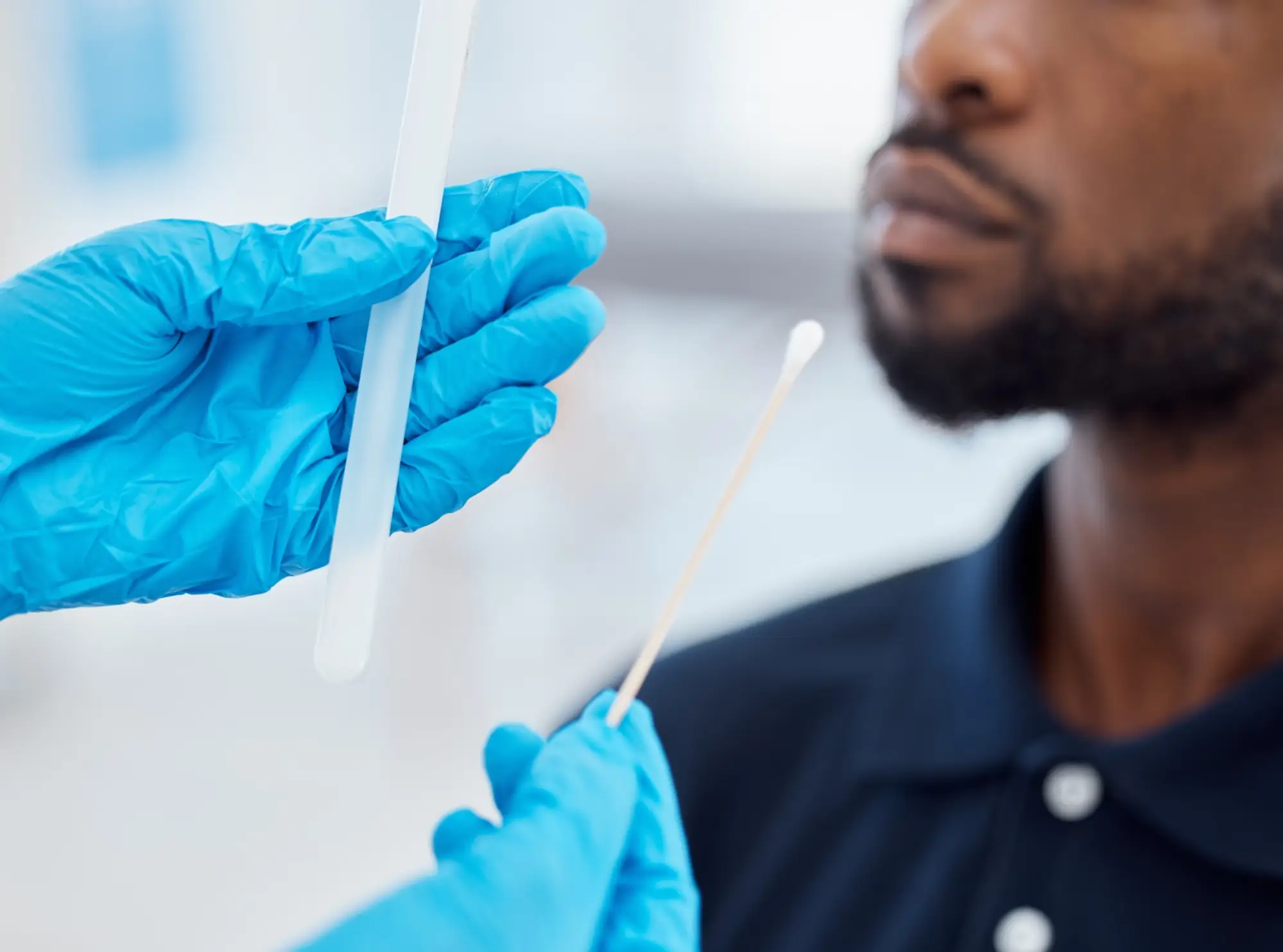
Paternity testing is a sensitive and life-changing process that determines whether a man is the biological father of a child. Whether you’re undergoing the test for personal peace of mind, legal reasons, or medical purposes, knowing what to expect is crucial—especially when it comes to the duration of the process. Timelines can vary depending on several factors, including the type of test, where it’s conducted, and whether the results are for legal use. This blog examines every aspect of paternity test duration, providing a comprehensive overview of the process from start to finish.
What is a Paternity Test?
A paternity test is a type of DNA test used to determine whether a man is the biological father of a child. It works by comparing the child’s DNA with that of the potential father. Because a child inherits half of their DNA from each biological parent, these tests are highly accurate—often with results showing a 99.9% probability of paternity if the man is the father. The test can be performed at any age after birth and sometimes even before birth through specialized prenatal testing. Its reliability has made it a trusted tool in legal, medical, and personal situations.
Different Types of Paternity Tests Available
The first factor that impacts the duration of a paternity test is the type of test used. There are several categories, each with a distinct process and timeline.
At-Home Paternity Tests
At-home paternity test kits are widely available and generally used for informational purposes. You collect DNA samples using cheek swabs and send them to a lab for analysis. These tests are not admissible in court, but they are fast and easy.
Legal Paternity Tests
Legal tests require strict chain-of-custody procedures. DNA collection must be witnessed and documented by a neutral third party. This process is necessary for court use, including child custody disputes, child support cases, and immigration matters.
Prenatal Paternity Tests
If paternity needs to be established before the child is born, a prenatal paternity test is required. These tests are more complex and expensive, often involving either a non-invasive blood draw from the mother or an invasive procedure, such as amniocentesis.
How Long the Paternity Testing Process Takes
The total timeline for a paternity test comprises several key steps: scheduling the test, collecting DNA samples, shipping those samples to a laboratory, and waiting for the results of the analysis. If you’re using an at-home kit, you can usually begin immediately, while legal or clinical tests may require a few days to schedule an appointment. Sample collection is quick and non-invasive, often completed in ten to 15 minutes using a simple cheek swab. Shipping time depends on the method used—overnight delivery can get samples to the lab the next day, while standard shipping may take several days. Once the lab receives the samples, processing typically takes one to three business days; however, expedited options can return results in as little as 24 hours.
Average Timeframe for At-Home Paternity Tests
For an at-home test, the entire process usually takes about one week from start to finish. Typically, you purchase the kit and collect DNA samples within the first two days. Then, the samples are mailed and usually arrive at the lab between three and five days. The lab processes the samples and returns results within approximately six to seven days. If you opt for overnight shipping and expedited lab services, you may receive results in as little as two to three days.
Legal Paternity Test Timeframes
Legal paternity tests take longer than at-home tests due to strict chain-of-custody requirements. Typically, an appointment is scheduled, and DNA samples are collected under supervision within the first three days of the appointment. The samples reach the lab by days four or five, followed by analysis and verification between days six and eight. Certified results are then mailed or securely uploaded around days nine or ten. Overall, the process typically takes seven to ten business days, although timing may vary depending on the lab’s workload and location.
Average Timeframe for Prenatal Paternity Tests
Prenatal paternity tests are the most complex and time-consuming of all paternity testing options. For a non-invasive prenatal paternity test (NIPP), the process typically begins with scheduling a blood draw and collecting samples within the first five days after conception. The samples are then shipped to the lab between days six and eight, where fetal DNA is analyzed, and results are returned between days nine and twelve. The entire process typically takes between one and a half to two weeks to complete. If invasive procedures, such as amniocentesis or chorionic villus sampling, are required, the timeline can be extended further due to the need for additional medical consultations.

Factors That May Delay Paternity Test Results
While the process is usually efficient, several issues can slow things down. Being aware of these can help you avoid unnecessary delays. Even minor oversights, such as missing paperwork or unclear identification, can delay results. Planning and following instructions carefully helps ensure a smooth and timely testing experience.
Incomplete or Contaminated Samples
If a DNA sample is not collected properly or is contaminated, the lab may require a new sample. This issue can add several days or even a week to the timeline. Contamination can occur from improper handling or exposure to foreign substances, which compromises the accuracy of the test. Ensuring that samples are collected according to exact instructions is essential to avoid these setbacks and keep the process on track.
Shipping Issues
Delays in shipping—whether due to postal service mishaps, holidays, or inclement weather—can impact how quickly the lab receives the samples. Once samples are delayed in transit, it can push back the entire timeline for processing and results. Using reliable courier services and tracking shipments helps minimize these risks. Planning for potential delays, especially during busy periods, can also help establish realistic expectations.
High Demand at the Laboratory
Some labs may experience a high volume of tests, especially during peak times, such as after holidays. This high volume can slow down processing even for expedited services. Laboratories must carefully analyze each sample, which takes time and resources that can be stretched thin during busy periods. Scheduling tests during less busy times or choosing labs with higher capacity may reduce waiting times.
Payment or Documentation Problems
If payment is delayed or legal documents are missing for a court-admissible test, labs may hold the results until all requirements are met. This administrative hold can cause unexpected delays, even if the testing itself is complete. It’s essential to verify that all paperwork is accurate and that payments are processed promptly. Staying organized and in communication with the testing facility can help prevent these issues.
How You’ll Receive Your Paternity Test Results
Most labs offer multiple ways to access your paternity test results, including secure online portals, email notifications, mailed hard copies—especially for legal tests—and phone call follow-ups for more complex or sensitive cases. This flexibility allows you to choose the method that best suits your needs. Results are typically straightforward to understand. They clearly state either a 0% probability of paternity or a 99.9% probability that the man is the biological father. This clarity helps ensure there is no confusion about the outcome.
When Quick Results Are Especially Important
There are situations where fast paternity test results are more than just a convenience—they are essential. Court deadlines in family law cases often require proof of paternity within a tight timeframe, making rush legal tests necessary. Immigration cases may also depend on timely results to confirm family relationships for visas or passports, as delays can slow the entire process. In rare medical emergencies, such as when a child or potential father needs a transplant or genetic screening, quickly establishing biological relationships can be life-saving. These urgent circumstances highlight the importance of choosing expedited testing options when time is critical.
What Happens After the Test?
Receiving paternity test results is often just the beginning, as the outcome may lead to significant legal, emotional, or familial steps. If the test was court-ordered, the certified results could impact child support, custody, or visitation decisions, with both parties typically receiving copies of the results. In some cases, legal confirmation of paternity allows for updating birth records to include the biological father’s name on the birth certificate. Beyond legal matters, a paternity test can also be part of a family’s journey toward reconciliation and healing. Many families find counseling or support services helpful in managing the emotional effects of the results.

Paternity Test Timeline and Key Factors That Affect It
How long does a paternity test typically take? The answer depends on the type of test, how quickly samples are collected and delivered, and whether applicable legal standards are in place. Paternity testing is more than just a scientific process—it’s often tied to deeply personal, legal, or medical questions. Knowing what to expect and how long each stage takes can help reduce anxiety and make the journey smoother. For more information about paternity tests, please visit our Arkansas Investigations blog.

